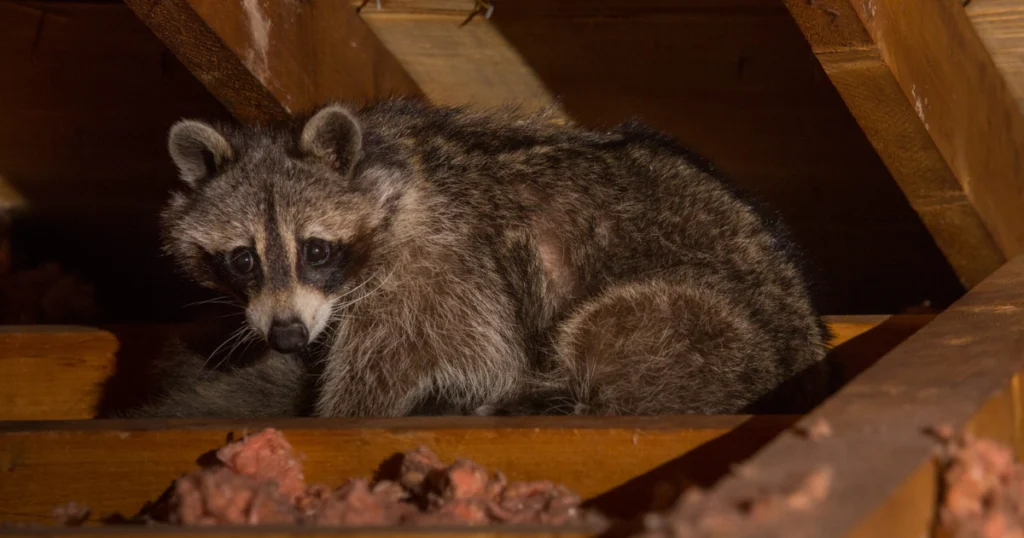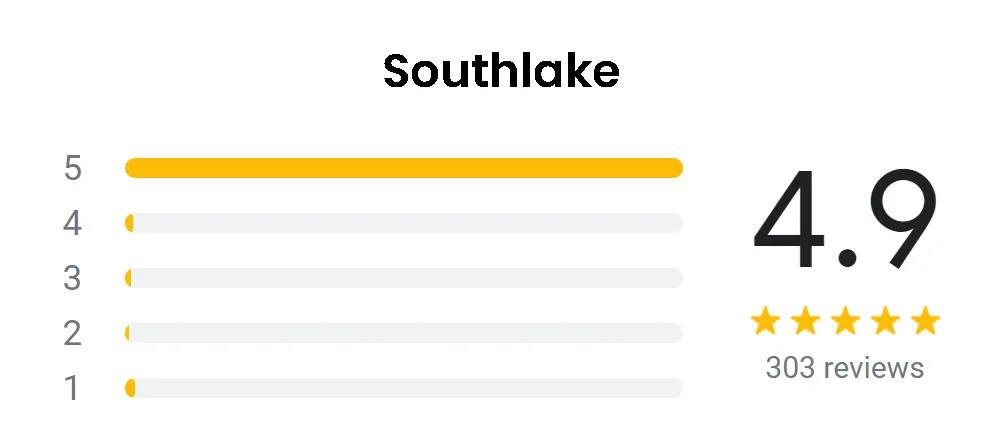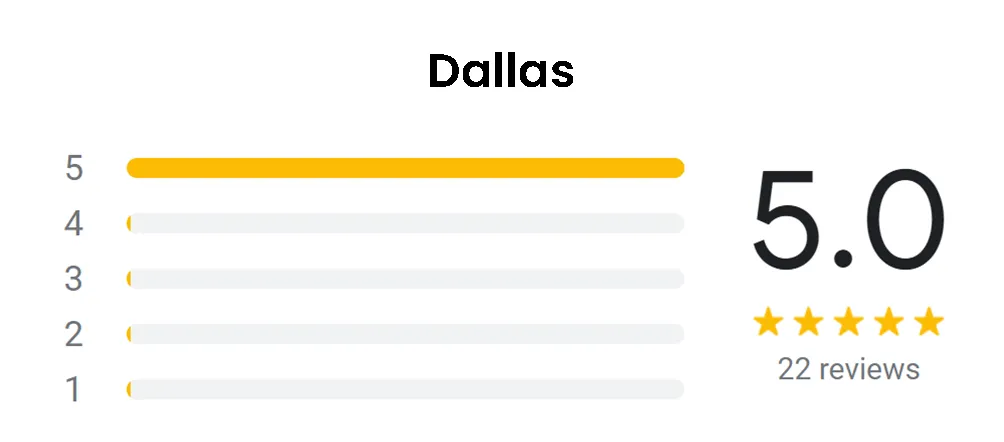
Raccoons on the roof can be a common issue for homeowners, often leading to concern about potential damage or disturbances. However, when raccoons have found a way into the attic or another part of the property, it becomes a very different story. This situation can lead to more serious problems like nesting, contamination, and structural damage. Getting to know their behavior and nesting habits is of great help in addressing the problem effectively.
These nocturnal creatures are adept at climbing and can easily access rooftops in search of food or shelter. Once on the roof, they may be drawn to loose shingles, vents, or any other openings that can serve as an entryway into the home.
Addressing the presence of raccoons on the roof requires prompt action. Leaving the problem for later can complicate the situation, leading to noise disturbances during the night or potential damage to the property. A very big warning comes from signs such as scratching sounds, raccoon droppings, or disturbed roofing materials. Property owners should be aware of these common signs of raccoon activity and take necessary steps to secure their homes.

The sighting of raccoons on roof at night is explained by their particular behavior. Their nocturnal nature and climbing abilities allow them to access roofs with ease, which can lead to conflicts with human residences.
Raccoons are primarily active during the night. They have a very developed sense of smell as well as acute hearing which enhances their ability to forage for food in the absence of light.
At night, raccoons may explore human environments for accessible food sources. They are attracted to trash cans, pet food left outside, and other potential food items. This behavior increases the likelihood of raccoons venturing onto roofs in search of nourishment.
Raccoons are often seen in groups as they’re very social. This teamwork can facilitate their exploration, making them more daring as they navigate rooftops. However, a raccoon is considered a lone pest animal, venturing into homes or yards by themselves in search of food or shelter, and even a single raccoon can cause significant damage or contamination.
Raccoons possess exceptional climbing skills, allowing them to ascend various surfaces with agility. Their sharp claws provide a strong grip, making it easy for them to scale trees, fences, and buildings.
A flat or low-pitched roof can serve as an entry point. They usually make use of trees and wires to get to higher places, enabling access to human structures.
Once on a roof, they may seek shelter in the property attic or chimney. They create nests and can cause raccoon damage, leading to potential infestations. The combination of nocturnal behavior and climbing proficiency often contributes to their presence in urban and residential areas.
Recognizing the signs of raccoon activity on roofs is essential for residents. Nocturnal behaviors and physical remnants can indicate their presence. Observing these indicators helps in timely intervention.
Raccoons are primarily active at night. Property owners often hear distinctive sounds that signal their presence, such as:
Listening for these noises during the late evening or early morning hours increases the chances of identifying raccoons running on roof surfaces. If persistent, these sounds may indicate a potential nesting site or food search.
In addition to auditory cues, physical evidence can confirm raccoon activity. Homeowners should look for:
Identifying these signs early can prevent more significant raccoon damage to the home and deter future infestations.

Raccoons on roofs present significant risks related to costly damage and health issues. These animals can cause harm to structures and may carry diseases that impact humans and pets.
Raccoons destroying roof structures is a common issue due to their ability to cause considerable damage. They can tear up shingles, pull up vents, and even break through roofing materials to enter the property attic. This behavior not only weakens the roof's integrity but can also result in expensive repairs.
This behavior not only compromises the roof's integrity but can also lead to costly repairs.
In addition to surface damage, raccoons may create nests in attic areas. This material can obstruct ventilation and torn insulation, resulting in increased energy costs. Their incessant scratching and movement can also lead to long-term deterioration of the roofing system.
Homeowners must pay immediate attention to the smallest signs of activity of this animal to prevent escalation. Regular checks can spot weak points and make sure everything is well-maintained before severe raccoon damage occurs.
Raccoons can spread several diseases that put humans and pets at risk. One of the most concerning is raccoon roundworm, a parasite that can cause serious neurological issues if transmitted. Additionally, raccoons may be carriers of rabies, a fatal virus that harms the brain and spinal cord.
Their feces can cause harm because it may carry harmful bacteria and parasites that can spread in living areas. This can lead to breathing problems and other health issues.
Given these potential risks, it is important for property owners to seek professional assistance to safely remove raccoons and clean any affected areas. Taking swift action can help eliminate threats to health and safety.
Taking steps to prevent male and female raccoons from accessing roofs is essential for householders. This includes securing entry points, using deterrents, and maintaining the property to reduce attractants.
Finding and sealing potential entry points is critical, especially to prevent raccoons in roof spaces. Raccoons can squeeze through openings as small as 4 inches. Homeowners should inspect roofs, eaves, and vents for gaps or holes.
Cover these openings with metal mesh or hardware cloth. Make sure chimneys have tight-fitting caps. Always check for worn or damaged roofing materials, as these can create easy access.
In addition to physical barriers, consider using screens on vents and exhausts to block raccoon entry without restricting airflow. Regular inspections can help maintain these defenses.
Using natural and artificial deterrents can help keep raccoons away from the roof and other areas of your home. Strong smells like cayenne pepper, vinegar, or ammonia can discourage them from approaching.
To keep raccoons off the roof, trim tree branches that hang close to the house, as raccoons often use them as bridges to climb onto rooftops. Installing metal guards around trees or using squirrel baffles can further limit their access. Motion-activated lights or motion activated sprinklers can startle raccoons, making them less likely to climb up. Additionally, placing spiked strips or non-lethal deterrent mats along roof edges can make it uncomfortable for raccoons to walk or nest there.
Acoustic deterrents that emit high-frequency sounds may also be effective, as these noises are unpleasant for raccoons but inaudible to humans.
For added security, consider installing a raccoon-proof garbage can. This keeps food sources secured and reduces the chances of attracting raccoons to the property, which could lead them to seek shelter on your roof.
Routine maintenance of the property is vital for preventing raccoons. Keeping trees trimmed and branches away from roofs reduces access points. How do raccoons get on the roof? Overhanging branches and wires provide easy pathways. Falling leaves can also provide cover, making a property more inviting.
Regularly cleaning gutters and eavestroughs prevents debris buildup that may attract raccoons. Additionally, ensuring that all outdoor food sources, such as pet food, bird feeders, or birdseed, are stored safely helps eliminate attractants that could draw raccoons to your yard.
Lastly, regular pest inspections can identify signs of raccoon activity early. Fixing issues quickly can stop bigger problems later on, keeping homes safe from unwanted visitors.

When raccoons take up residence on a roof, addressing the situation promptly is essential. Both DIY solutions and professional removal services provide effective options to manage the issue.
For those who prefer a hands-on approach, several methods can help prevent raccoons roof infestations. First, inspect the roof for entry points such as gaps or holes, especially around vents, chimneys, and eaves. Sealing these openings with durable materials like metal mesh can deter raccoons from entering.
Another tactic is to remove attractants. This includes securing garbage cans, removing cat or dog food left outside, and cleaning areas around the home. Another alternative is to use motion-activated lights as well as noise devices since they can scare raccoons away.
Setting traps may also be an option, though it's important to check local regulations regarding trapping. Using bait like marshmallows or cat food can increase the chances of success.
In many cases, hiring professionals is the most effective way to deal with a raccoon infestation. They have the right tools and methods that ensure safe removal. They also understand raccoon behavior, which can lead to more successful outcomes.
Professional services typically include a thorough inspection of the property to identify entry points and nesting areas. They can provide comprehensive exclusion solutions, sealing potential entry points with sturdy materials.
Additionally, professionals can offer follow-up services, such as cleanup of any remaining debris or waste left by the raccoons. This not only improves hygiene but also prevents future infestations.
When encountering raccoons on a roof, it is essential to understand the legal and ethical implications surrounding their management. Various regulations protect wildlife, and inappropriate handling can lead to legal consequences. A humane approach is crucial to ensure the well-being of the animals involved.
Raccoons are often protected under state and federal wildlife laws. These regulations differ by region, but they generally do not allow catching or killing wild animals without the permit needed. Understanding local laws is vital.
Before taking action, individuals should check with local wildlife agencies. Breaking the rules can result in fines or other type of penalties.
In some areas, specific seasons for trapping raccoons exist. Adhering to these laws ensures that residents act responsibly. Consulting with a licensed professional can provide guidance tailored to local stipulations.
Prioritizing humane methods for handling raccoons is ethically important. Relocation is often preferred to extermination, as it allows the animal to survive in a natural environment.
Using humane traps that minimize stress and injuries is essential. For instance, live traps allow for safe capture without harming the animal.
Once captured, they should be released in a suitable habitat, away from human dwellings. This approach promotes coexistence and adheres to ethical guidelines.
Education on raccoon behavior can help prevent conflict, reducing the need for intervention. Providing exclusion methods, such as secure trash storage and closing entry points, proves effective.
Addressing damage from raccoons requires careful assessment and appropriate repair techniques. Identifying the type and extent of damage will dictate the necessary restoration methods.
Identifying damage is a crucial first step. Most raccoons can leave significant marks, including torn shingles, displaced flashing, and broken vents. Inspect the roof for:
Using binoculars may help for initial inspection from the ground. For closer inspection, safely use a ladder or hire a professional roofer. Documenting the damage with photos aids in determining the overall repair strategy and can be beneficial for insurance claims.
Once the damage is assessed, the next step involves restoration. Common techniques include:
It is essential to use high-quality materials during repairs to withstand future raccoon activity. After repairing, installing raccoon-proof barriers, such as metal flashing or wire mesh, can further protect the roof. Regular inspections post-repair help maintain the roof’s integrity and deters further damage.

Several resources are available for individuals dealing with raccoon-related issues. These resources provide crucial information and support for education and community assistance.
Various organizations offer educational materials regarding raccoon behavior and management. These materials include pamphlets, online articles, and videos that cover topics like:
Local wildlife agencies often produce resources tailored to specific regions. Many universities also conduct research on urban wildlife and provide data-driven insights. Individuals can access this information through university websites or state wildlife departments to better understand how to manage raccoon interactions on their property.
Local community programs may assist residents dealing with raccoon issues. Many municipalities have wildlife rehabilitator and control services that offer guidance and support. This includes:
Community organizations sometimes host events to educate residents. These events focus on animal control laws, safe wildlife interaction, and best practices for preventing old and young raccoons entry into roofs and attics at homes. Engaging with local programs can help build a safer environment while fostering community awareness.
Effective management of raccoons involves implementing practical strategies that minimize their presence and impact. By addressing landscaping and reinforcing roof and attic structures, property owners can deter these animals from invading their roofs and protect their property from damage.
Changing the landscape around a property can highly reduce the possibility of raccoons accessing roofs. Removing food sources is critical. Residents should secure trash cans with lids and eliminate pet food left outside.
Key landscaping tips include:
These changes can create an environment less appealing to raccoons.
Ensuring a sturdy roof is essential in preventing raccoon intrusion. They can cause significant damage by tearing shingles or creating holes. Constant revision and maintenance helps in identifying vulnerabilities.
Recommended reinforcement strategies:
Implementing these measures can enhance the durability of a roof and deter raccoons from entering at night.
Recognizing when professional assistance is necessary can protect both property and wildlife. Proper assessment ensures the situation is handled effectively and safely.
Several signs show that it's time to call a wildlife specialist. If raccoons are frequenting a roof, signs may include:
If multiple signs are evident, immediate action is recommended. Ignoring these cues can lead to property damage or potential health risks from parasites and diseases.
Selecting a qualified wildlife specialist is crucial for effective raccoon removal and prevention. Consider these factors:
A well-chosen specialist can not only remove the raccoons but also recommend preventative measures to secure the property.
If raccoons on your roof are making you lose sleep, Critter Stop is here to help! We are a fully licensed and insured wildlife removal company, serving both commercial and residential customers in Texas. As professionals, we understand the importance of humanely removing raccoons from your property, and we have the experience and equipment to do it right. Contact Us at (214) 234-2616 and schedule your free inspection and estimate today!
Raccoons can pose various issues when they access rooftops. Understanding how to deter them, recognizing signs of their presence, and knowing how to respond can help mitigate problems.
Yes, raccoons often climb onto roofs using trees, wires, or other structures. Their sharp claws make them excellent climbers, and once on the roof, they may enter an attic or chimney, causing damage and leading to potential infestations.
To deter raccoons, homeowners can make sure tree branches are trimmed back. This limits easy access points. Installing an anti raccoon barrier, such as metal sheeting, can also help secure vulnerable areas.
Noises associated with raccoons include scratching, scurrying, and thumping sounds. These noises often occur during the evening or nighttime hours when raccoons are most active. Listening for these sounds can signal their presence.
If a raccoon is spotted on the roof, it’s advisable to remain calm and avoid direct confrontation. Contacting a wildlife removal service ensures safe and humane handling. Keeping windows and doors secured prevents accidental encounters.
If you notice a raccoon on the roof at night, avoid direct confrontation and use noise or lights to scare them away. Check for entry points like damaged vents and seal them. Contact a wildlife removal professional for safe, humane raccoon removal.
Raccoons can cause damage by pulling off shingles and chewing on materials. Preventing this involves securing vents and chimneys with proper coverings. Regular roof inspections help identify any weaknesses that need addressing.
During winter, raccoons seek shelter in warmer areas such as the home attic or roof. These locations provide protection from the elements and are often close to feeding areas as an attic provides warmth and isolation. They may be drawn to the property attic and rooftop for safety and comfort.
Raccoons are primarily nocturnal animals. Their activity at night allows them to prevent direct contact with predators and search for food. Observing a raccoon on the roof at night indicates their natural behavior and survival instincts.
Visit our Critter Library and learn more about our furry friends







